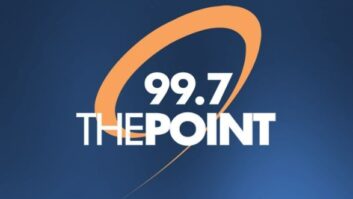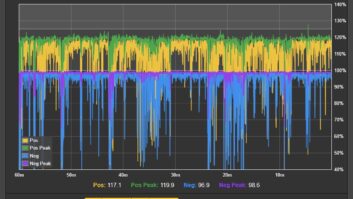This text first appeared in The Local Oscillator, the newsletter of Crawford Broadcasting Co. Corporate Engineering.
It seems that a week doesn’t go by when some publication comes across my desk or computer screen with a news article or feature about HD Radio, otherwise known as IBOC.
This is nothing new. I can recall a similar blizzard of DAB hype in the early and mid-1990s. In those days, we all felt (and prayed) that a terrestrial digital medium for broadcasters was just around the corner.
When pressed by Mr. Crawford back in 1992 for a prediction, based on all the news of development in the DAB arena, I said that we would have a digital medium deployed in 1994. I missed that one by just a little bit.
Still, efforts have been afoot since 1992 or so. There were displays showing the IBOC FM system in its early stages at the NAB spring shows during those years.
In early 1994, USA Digital, the forerunner of Ibiquity Digital, submitted a pair of systems to the National Radio Systems Committee for testing.How could we not have been on the doorstep of digital then?
FM push
Perhaps we were closer than we thought, but like the rat in the maze who unknowingly turns back just one turn away from the prize it seeks, the industry sought another route. Competing entrants into the digital arena further muddied the waters.
We were all so afraid of another “AM stereo” debacle, the infamous FCC “let the marketplace decide” action that effectively killed AM stereo as an economically viable medium. Thankfully, the competing IBOC entrants eventually merged, providing the broadcast and receiver industry with the best of all worlds, at least in terms of the system designs that each brought to the table. Now, we are on terrestrial digital’s doorstep – sort of.
What we have is an FM system that has been demonstrated to work, but an AM system that has been FCC-approved for daytime use only. My own impressions of the AM system have not been all that favorable, and I concur with the recent NRSC action in halting its standards-setting efforts while Ibiquity works to resolve codec concerns. I assume that Ibiquity can work through these issues, as prior years’ demonstrations of the AM system sounded much better to my ear than the current iteration.
For the moment, the big “push” by Ibiquity to saturate the nation’s top markets with HD Radio signals focuses mainly on FM.
Ironically, it is FM that stands to gain the least from a digital medium. Properly done, FM analog sounds great. Sure there are multipath, noise and other signal anomalies. For the most part, however, the recovered audio from a well-delivered, conservatively processed FM analog signal will be on a par with that from a digital medium.
Add in the ambient noise from the mobile listening environment – arguably the place where the lion’s share of FM listening takes place – and the noise advantage of digital goes out the window.
Throw in the compromises that are inherent in the Perceptual Audio Coder algorithm and one might well reasonably argue that analog FM sounds better. AM, on the other hand, stands to gain a lot from a digital medium – if the problems with the AM codec can be worked out. Interference, noise and limited bandwidth on the analog signal are all shortcomings that can be overcome with HD Radio.
Half of a solution
Based on closed-circuit demonstrations of AM HD Radio that I have heard at previous years’ NAB conventions, the possible improvements are huge.
Yet here we are with only half an AM system. I understand that nighttime testing of AM HD Radio is underway, but we are likely a year or more away from approval. In my opinion, it is better for our fulltime AM stations to stay strictly analog until nighttime HD operation has been approved.
Otherwise, assuming good HD receiver proliferation, you in effect create a daytime-only station, or at least the perception of such. That is something we would just as soon avoid.
Where will we be with respect to HD Radio a year from now? Two years? I have sworn off making such predictions. One thing I will predict, however, is that we will know more a year from now than we do right now. As we move ever closer to launching HD Radio on our Chicago market station WPWX(FM), we are learning even now.
A year from now we’ll have nine or 10 months of HD operation under our belts and will hopefully be much better acquainted with the medium. Hopefully too, HD-compatible radios will be readily available on the shelves of electronics retailers and they will be available as other than top-shelf upgrades in new cars.
Will Crawford Broadcasting Co. dive in headfirst, converting all our stations to HD Radio in the first wave? No, we will not.
What we will do is implement a limited conversion, supporting as best we can the new medium without making a huge, rather risky investment at a time of economic uncertainty and weak consumer confidence. What we will do is our very best, and with the conversions that we do make, we will endeavor to learn all we can so that future conversions can be more effective and economical. And we will hope and pray that within the next year or so, we will have a full HD Radio system available from which all stations, both AM and FM, can benefit full-time.







